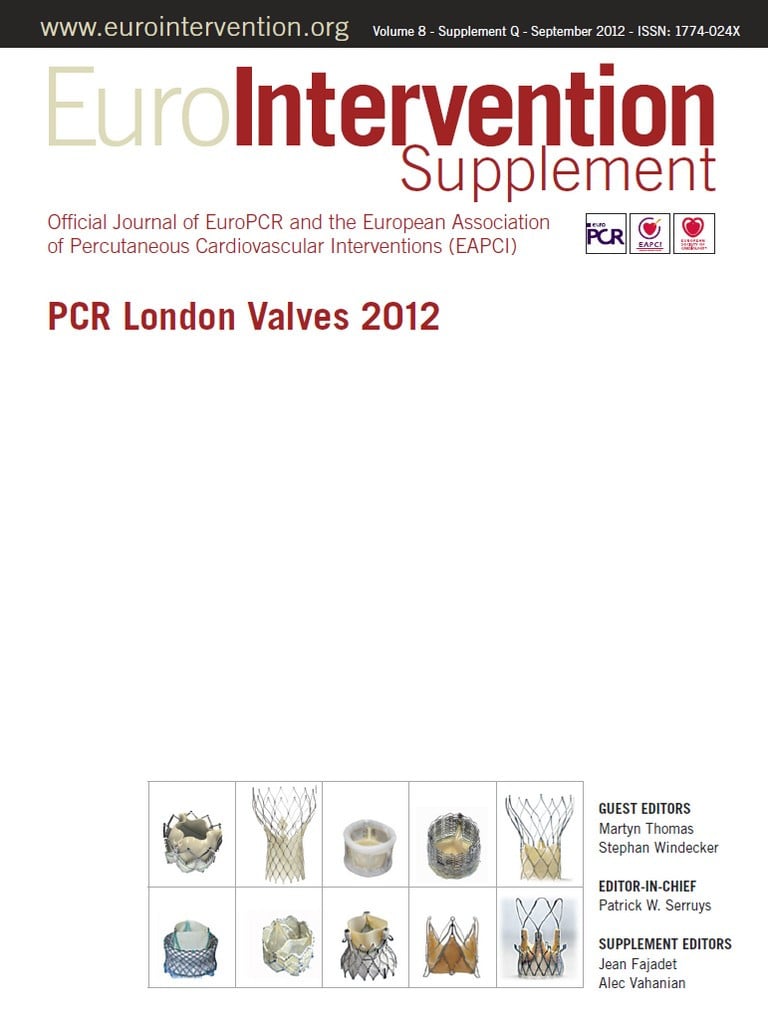![]()
Single and multicentre TAVI registries
TAVI for patients with severe bicuspid aortic valve stenosis
Aims: A bicuspid aortic valve (BAV) is regarded as a relative contraindication to transcatheter aortic valve implantation (TAVI) due to the risk of uneven expansion of the bioprosthesis. The purpose of this study was to evaluate the efficacy and safety of TAVI in patients with BAV.
Methods and results: Of 470 patients included in our prospective TAVI database (October 2006 to January 2012), 229 consecutive patients undergoing both echocardiography and multidetector computed tomography (MDCT) were analysed. We compared clinical outcomes in patients with vs. without BAV. In this series of 229 patients, BAV was detected by MDCT in 21 patients (9.2%). BAV was identified by transthoracic and/or transoesophageal echocardiography in 9/21 patients only. The BAV group consisted of type 1 L-R (16 cases), type 1 R-N (1), type 1 L-N (1) and type 2 L-R and L-N (3). The mean length of raphe measured by CT was 12.7±2.7 mm (range: 7-16 mm). Patients were 83.1±6.6 years old and EuroSCORE 20.0±11.4%. The BAV group was similar to the non-BAV group except for diabetes (4.8 vs. 24.0%, p=0.04). The aortic annulus diameter was not significantly larger by MDCT (24.7±3.0 vs. 23.7±1.9 mm, p=0.14) in BAV patients. CoreValve was used more frequently in the BAV group (47.6 vs. 16.3%, p<0.01). There was no significant difference in device success (100 vs. 92.8%, p=0.23), risk of annulus rupture (0 vs. 1.4%, p=0.75) or valve migration (0 vs. 1.4%, p=0.75) in BAV vs. non-BAV patients. Post-procedural mean gradient (10.0±3.4 vs. 9.7±4.1 mmHg, p=0.78), aortic regurgitation ≥2/4 (19.0 vs. 14.9%, p=0.54), 30-day mortality (4.8 vs. 8.2%, p=0.49) and 30-day combined safety point (14.3 vs. 13.5%, p=0.56) were also similar in both groups. In the BAV group there were no significant differences in post-procedural mean pressure gradient (9.3±3.2 vs. 10.8±3.6 mmHg, p=0.36) and post-procedural AR grade ≥2 (9.1 vs. 30.0%, p=0.31) between Edwards valve and CoreValve.
Conclusions: In patients with BAV, TAVI is associated with high rates of success, low complication rates, similar efficacy and acceptable outcomes as in non-BAV patients.

